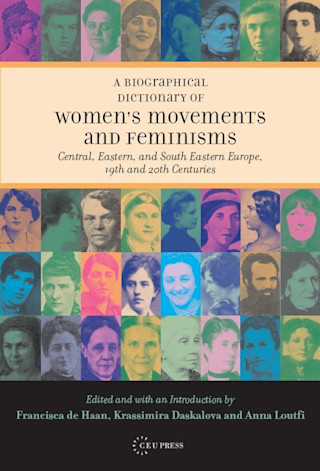Dagnoslaw Demski
Dagnoslaw Demski is an associate professor at the Centre for Ethnology and Contemporary Anthropology at the Institute of Archaeology and Ethnology of the Polish Academy of Sciences in Warsaw.


The cultural phenomenon of exhibiting non-European people in front of the European audiences in the 19th and 20th century was concentrated in the metropolises in the western part of the continent. Nevertheless, traveling ethnic troupes and temporary exhibitions of non-European humans took place also in territories located to the east of the Oder river and Austria. The contributors to this edited volume present practices of ethnographic shows in Russia, Poland, Czechia, Slovenia, Hungary, Germany, Romania, and Austria and discuss the reactions of local audiences. The essays offer critical arguments to rethink narratives of cultural encounters in the context of ethnic shows. By demonstrating the many ways in which the western models and customs were reshaped, developed, and contested in Central and Eastern European contexts, the authors argue that the dominant way of characterizing these performances as “human zoos” is too narrow.
The contributors had to tackle the difficult task of finding traces other than faint copies of official press releases by the tour organizers. The original source material was drawn from local archives, museums, and newspapers of the discussed period. A unique feature of the volume is the rich amount of images that complement every single case study of ethnic shows.
Dagnoslaw Demski is an associate professor at the Centre for Ethnology and Contemporary Anthropology at the Institute of Archaeology and Ethnology of the Polish Academy of Sciences in Warsaw.
Dominika Czarnecka is an assistant professor at the Centre for Ethnology and Contemporary Anthropology at the Institute of Archaeology and Ethnology of the Polish Academy of Sciences in Warsaw.

Acknowledgments
1. Introduction: From Western to Peripheral Voices
Dominika Czarnecka and Dagnosław Demski
PART I. EUROPEAN VERSUS INDIGENOUS AGENCY
2. The Hagenbeck Ethnic Shows: Recruitment, Organization, and Academic and Popular Responses
Hilke Thode-Arora
3. A Brief History of Staging Somali Ethnographic Performing Troupes in Europe, 1885–1930
Bodhari Warsame
4. “Wild Chamacoco” and the Czechs: The Double-Edged Ethnographic Show of Vojtěch Frič, 1908–9
Marketa Křižova
5. Why Hidden Ears Matter: On Kalintsov’s Samoyed Exhibition in Vienna, 1882
Evgeny Savitsky
PART II. PERFORMING THE ETHNOGRAPHIC OTHER
6. The (Ethno-)Drama of Exoticism: Ethnic Shows as a Medium
Dagnosław Demski
7. How Do These “Exotic” Bodies Move? Ethnographic Shows and Constructing Otherness in the Polish-Language Press, 1880–1914
Dominika Czarnecka
8. The World of Creation: Press Accounts of Ethnographic Shows in Circus Performances in Upper Silesia
Kamila Baraniecka-Olszewska
PART III. ACROSS LOCAL CONTEXTS
9. Racialized Performance and the Construction of Slovene Whiteness: Ethnographic Shows and Circus Acts on the Habsburg Periphery, 1880–1914
Andreja Mesarič
10. A Century of Elision? Ethnic Shows in Saint Petersburg and Moscow, 1879–1914
Maria Leskinen
11. “When Winter Arrives, the Sinhalese Go Back to Ceylon and Their Elephants Go to Hamburg”: Hagenbeck’s Sinhalese Caravans and Ethnographic Imagery in the Polish Press during the Partition Era
Izabela Kopania
12. The Call of the Wild: A Sociological Sketch of Buffalo Bill’s Wild West in Banat and Transylvania
Timea Barabas
13. “Staged Otherness” in Saint Petersburg
Istvan Santha
Epilogue
List of Contributors
Index



